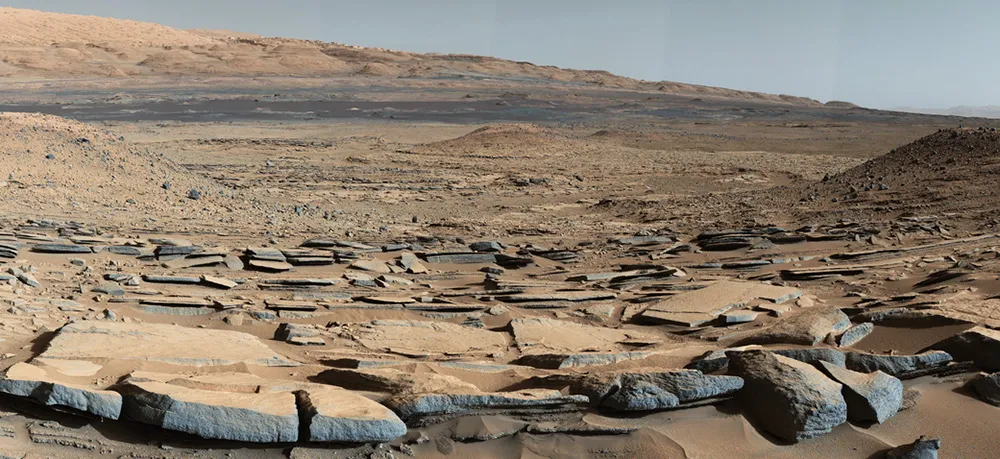I’m so close to the realization of a dream I’m about to go mad. I have a room set aside in my house for the HTC Vive. I have a computer ready to run it. All I need (besides delivery of a Vive) is a piece of software built from NASA data to turn the floor of my personal holodeck into the surface of Mars. Then I will invite everyone I know over to examine my personal “Dreamatorium”, including my high school science teacher. After they walk on Mars, stooping down along the way to examine rocks up close, I’ll pop them in the award-winning Apollo 11 experience from Immersive VR Education. I hope to explode their minds one after another with a one-two punch of the past and future of space exploration.
At the Unity Vision Summit in Hollywood I expressed my hopes to Jeff Norris, the Mission Operations Innovation Lead at NASA’s Jet Propulsion Laboratory.
“My team, and the people that support my team, are committed to making those kinds of experiences happen,” Norris said. ”I do believe you’re not going to be disappointed.”

Maybe I’m aiming a bit high for how people will react to walking on Mars or going to the moon, but I don’t think so. I’m hoping to induce a feeling similar to the one Edgar Mitchell described. Mitchell is best known as the sixth man to walk on the moon and is often quoted for something he said about the eye-opening perspective gained from being out there and looking at the whole Earth alone in the vast, empty, expanse of space. In some ways Mitchell, who died this month, might as well be talking about the eye-opening perspective one can gain after wearing a VR headset:
You develop an instant global consciousness, a people orientation, an intense dissatisfaction with the state of the world, and a compulsion to do something about it. From out there on the moon, international politics look so petty. You want to grab a politician by the scruff of the neck and drag him a quarter of a million miles out and say, ‘Look at that, you son of a bitch.’
In fact, NASA did an experiment a while back that helps explain the difference in understanding a person can gain from examining information in a head-mounted display versus a traditional screen. The results were shared as part of presentation given by Norris and Victor Luo, a senior technical lead and human interfaces engineer at JPL, at the Unity Vision Summit. I spoke to Luo after the discussion to understand this experiment better. He explained they took a 360-degree view of the planet’s surface as captured by the Mars Curiosity rover and specified five targets within the scene. They presented it to some scientists on either a traditional 2D screen or in a head-mounted display and then, afterward, asked those scientists to draw a map showing where they thought those five targets were located. The results showed the people who saw the 360 data presented in the VR headset were able to draw the targets on the map closer to their actual locations than the people who looked at the data on a traditional screen. The green circles in the chart below are the people who wore the headset.
Despite the economic gains within reach because of the reusable rocket work of teams employed by Elon Musk and Jeff Bezos — efforts poised to dramatically lower the cost of putting satellites and people in space — it’s looking like the future imagined in 2001: A Space Odyssey may escape the lifetimes of many born in the 20th century. The economics of space travel aren’t cheap enough yet to allow a great many people to travel in orbit for work and pleasure. No matter. NASA and its partnerships with mixed reality hardware and software companies are likely to help a great many people walk on Mars very soon.
I first spoke to Norris relatively early on covering Oculus and the emergence of modern VR. In 2013, his team was already working with the Oculus development kits and exploring how they might be used to examine the data returned from spacecraft. As consumer products have drawn closer, we’ve heard of partnerships with PlayStation VR, Microsoft HoloLens and other companies to enhance the work done by astronauts in orbit (project Sidekick) and scientists on the ground. You can put on a Gear VR or Cardboard to examine images from Mars right now. Nothing like walking on the surface of Mars is available just yet to consumers at home though. When I asked Norris about new projects he was tight-lipped about specific mind-blowing experiences on the way but, according to an Epic Games blog post, “more details will be announced during a panel at South by Southwest 2016.”
In the meantime, as I ache for the ability to expand people’s minds in my own personal Holodeck, you’ll have to read the following quote from Norris about the experiment they performed for an idea of what’s coming — not just to scientists — but to everyone.
“Part of the reason why I think they performed so well when they were wearing a head-mounted display is that they were being human,” said Norris. “So many computer interfaces require accommodation by a human, meaning we have to sort of mold ourselves to whatever was conveniently implementable in the interface … when we start to look at what is possible with VR we are finding ways for people to let people engage with data, with environments, with machines, the way that they would engage with real environments and machines.”
If you’d like to learn more, check out the Voices of VR podcast by Kent Bye where he interviews Jeff Norris.































